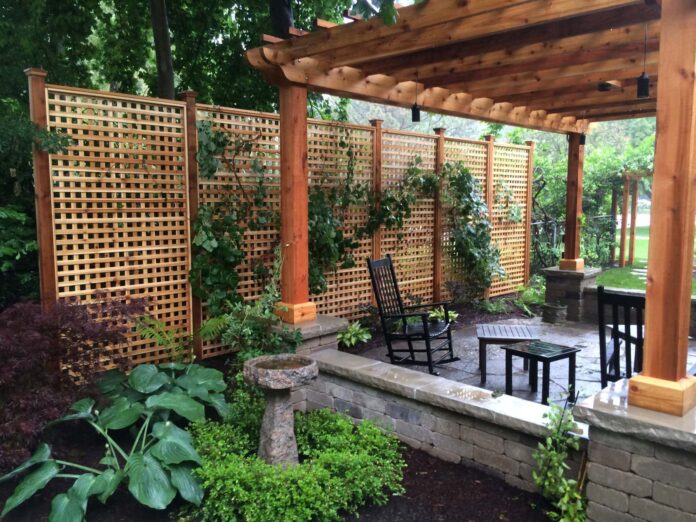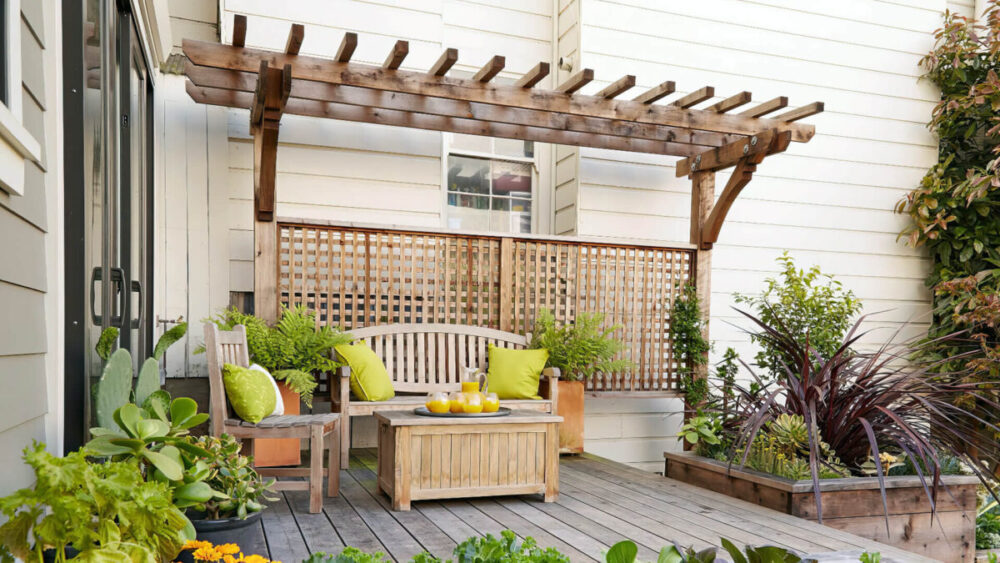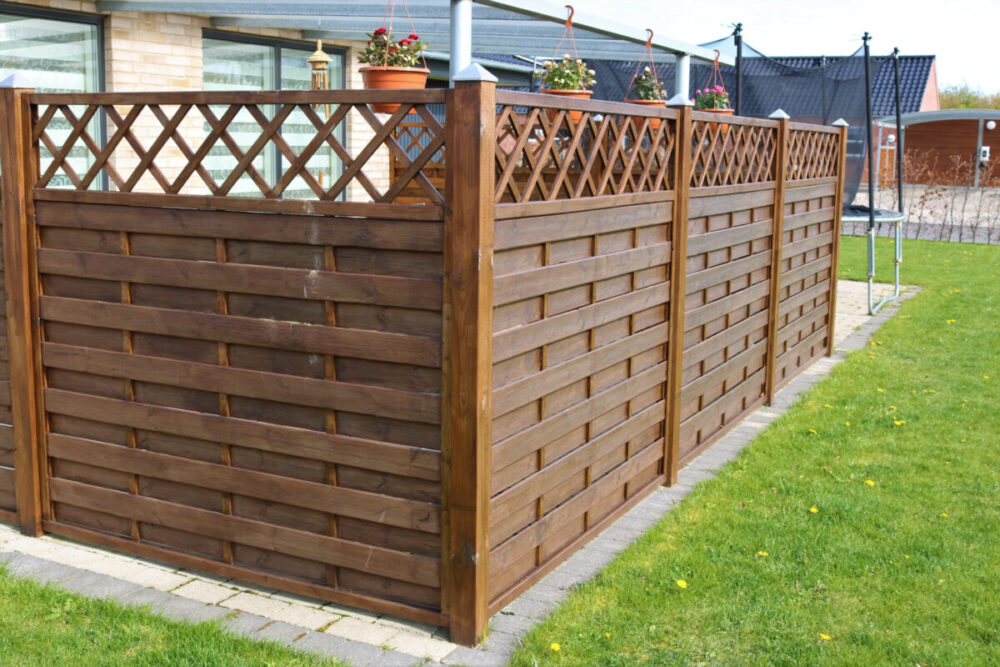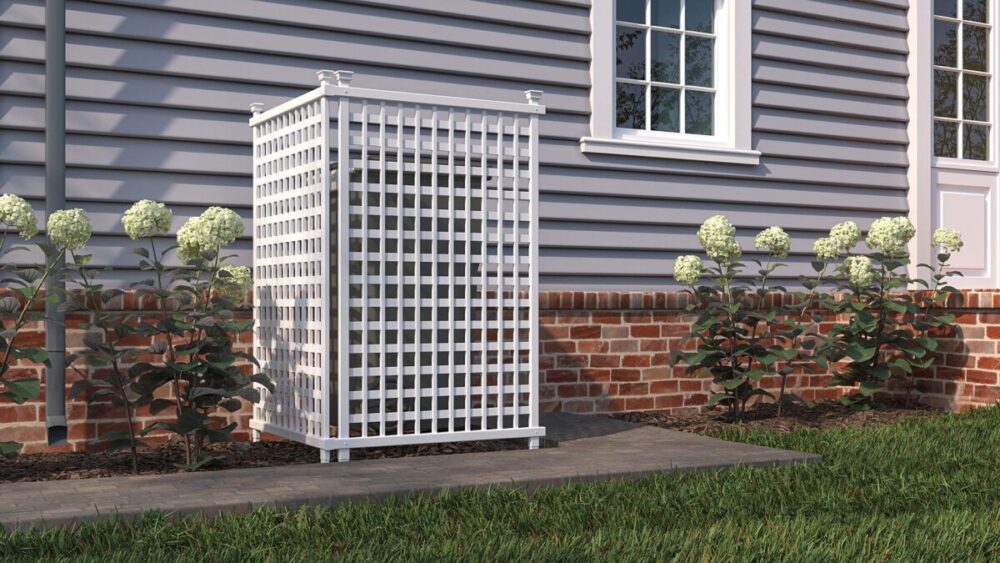
Privacy is a fundamental aspect of our lives, and in the realm of home design, it translates into creating spaces that offer seclusion and tranquility. Privacy lattice, a versatile and aesthetic solution, is at the forefront of this pursuit. This article explores the world of privacy lattice, its applications, benefits, and considerations for homeowners and designers alike.
The Essence of Privacy Lattice
Privacy lattice is a framework consisting of strips of wood or other materials crisscrossed to form a grid pattern. Traditionally used in garden and porch settings, it has evolved to become a multifaceted design element. Its primary function is to provide a barrier that offers privacy while allowing light and air to pass through. This duality makes it a favored choice for outdoor spaces.
Historical Roots and Evolution
Tracing its origins, lattice work has been a part of architectural designs for centuries. It was prevalent in different cultures, from the intricate jalis of Indian architecture to the latticed windows of traditional European homes. Over time, the use of lattice has evolved, adapting to modern needs and aesthetics while retaining its functional roots. Today, privacy lattice is not just a functional element but also a statement of style and personal taste.
Design and Material Innovations

The modern lattice comes in various materials like wood, vinyl, and metal, each offering unique benefits. Wood lattice, with its natural look, brings warmth and traditional charm. Vinyl lattice, on the other hand, offers durability and minimal maintenance. Metal lattice, with its robustness, caters to a more contemporary aesthetic. The design possibilities are vast, ranging from classic weaves to more intricate and custom patterns.
Integration in Outdoor Spaces
Privacy lattice finds its place in numerous outdoor settings. It’s commonly used in gardens as a support structure for climbing plants, creating a natural green wall. On decks and porches, it serves as a privacy screen, offering seclusion without the feeling of confinement. Lattice panels can also be integrated into pergolas, creating shaded areas that are both private and open to the natural surroundings.
Balancing Privacy and Aesthetics
The key to successfully implementing privacy lattice is to strike a balance between privacy and aesthetic appeal. The design should complement the existing architectural style and landscape. The choice of material and pattern plays a crucial role in how the lattice blends with its surroundings. It’s essential to consider the level of privacy needed and how it impacts the overall design.
Installation and Maintenance Considerations

Installing privacy lattice requires careful planning. Factors like the structural support, the orientation of the slats, and the overall dimensions need to be considered. Maintenance varies with the material; wood lattice may require regular staining or painting, while vinyl and metal are more low-maintenance. The longevity of the lattice also depends on the quality of installation and the material’s resistance to environmental factors.
Customizing to Suit Personal Style
The beauty of privacy lattice lies in its ability to be customized to suit personal style preferences. Homeowners can choose from a variety of colors, finishes, and materials to match or contrast with their existing home exterior. Intricate lattice designs can be used as a focal point in the garden or as an accent feature on a deck, showcasing the homeowner’s unique style and enhancing the overall aesthetic appeal of the outdoor space.
Environmental Impact and Sustainability
In an era where environmental concerns are paramount, the choice of material for privacy lattice becomes crucial. Sustainable options like bamboo or recycled plastic offer an eco-friendly alternative to traditional materials. Considering the environmental impact and the sustainability of the materials used not only contributes to a healthier planet but also resonates with the growing trend of eco-conscious living.
Enhancing Functionality Beyond Privacy
While privacy is the primary function of lattice, its application extends beyond just creating secluded spaces. It can be used to hide unsightly elements like air conditioning units or garbage cans, seamlessly integrating them into the landscape. Lattice can also serve as a sound barrier, reducing noise pollution and creating a more peaceful outdoor environment.
Creative Integration with Landscaping
Integrating privacy lattice with landscaping opens up a world of creative possibilities. It can be used to create vertical gardens, adding a touch of greenery while maximizing space. The interplay of light and shadow through the lattice patterns creates dynamic visual effects, especially when combined with outdoor lighting. This integration not only enhances privacy but also contributes to the overall beauty and serenity of the outdoor space.
Navigating Local Regulations and Neighborly Considerations

Before installing privacy lattice, it’s important to be aware of local zoning laws and homeowners’ association regulations. Understanding these guidelines ensures that the installation is compliant and avoids potential disputes. Additionally, considering the impact on neighbors and maintaining a harmonious relationship is vital. A well-thought-out lattice design can enhance privacy without compromising neighborly relations or obstructing views.
Future Trends and Innovations in Lattice Design
As architectural and design trends evolve, so do the applications and innovations in lattice design. We are seeing a trend towards more geometric and abstract patterns, catering to modern aesthetic sensibilities. The integration of technology, like solar-powered lattice panels, is an exciting development, offering both functionality and environmental benefits. The future of privacy lattice is one of continuous innovation, adapting to changing lifestyles and design preferences.
Final Thoughts
Privacy lattice is more than just a functional element; it’s a versatile and stylish addition to any outdoor space. Its ability to provide privacy, enhance aesthetics, and integrate seamlessly with the environment makes it a valuable component in contemporary home design. As we continue to explore and innovate in the world of privacy lattice, its role in creating beautiful, private, and sustainable outdoor spaces is set to grow, reflecting our ongoing desire for a perfect balance between openness and seclusion in our living environments.








